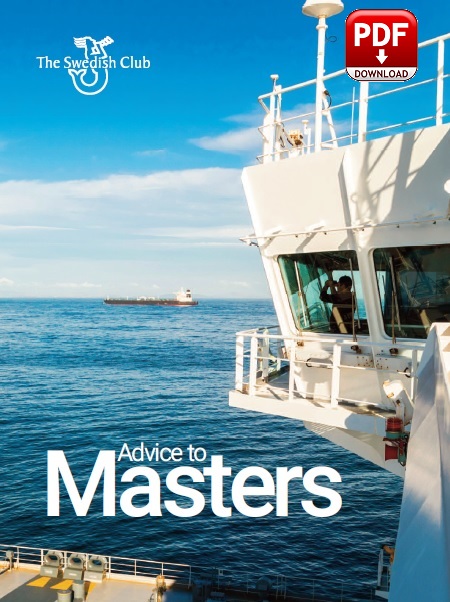В настоящей публикации рассматриваются важнейшие виды морского страхования – каско (H & M) и страхование ответственности судовладельца (P & I). К публикации прилагается руководство для капитанов судов Шведского клуба взаимного страхования по правилам поведения в условиях несчастного случая. A shipowner can face losses arising from many different types of casualty, and to offer the best levels of protection marine insurance has developed into two distinct categories of insurance cover: protection and indemnity (P&I) insurance and hull and machinery (H&M) insurance.
H&M insurance is property insurance, covering damage to the vessel itself, its machinery, the vessel’s proportion of salvage costs and the vessel’s contribution to general average*.
P&I insurance is the shipowner’s liability insurance. Within the cover of the P&I insurance falls liabilities for damage to a third party such as personal injury, cargo damage, pollution, etc.
Notification of claims
When a casualty occurs you should notify the owners of the vessel and the P&I Club as soon as possible in order to arrange for the necessary attendance and support.
To ensure immediate attention you or the owners should always notify the Club of a casualty by telephone. If you need to report a casualty via an email this should always be followed up by a telephone call – it is preferred to be notified one time too many, rather than be notified too late.
In order to provide the clearest picture of the situation, please be prepared to provide the following information:
- Name of the vessel.
- Date of casualty.
- Type of casualty.
- Position/place/port.
- Brief description of the damage (in English).
- Where and when survey can be arranged.
- Name and particulars of owner’s local agents in the port where survey can be arranged.
Actions concerning potential claims
Casualties
In the event of a casualty steps should be taken immediately to prevent or mitigate any damage arising. In certain situations, you may find that you have to act without instructions or advice. On such occasions sound judgement is of the greatest value. It is important that you are especially careful when asked to sign documents. Remember, if in doubt you can consult the P&I correspondent. Do note that the vessel’s agents sometimes also represent the charterers, whose interests may be contrary to those of the owners.
If the vessel is held responsible in any way, it is important to remember that documents presented on behalf of the claimant should not be signed by the Master, unless it is added in writing that the signature is an acknowledgement of receipt only.
Cargo damage
The vessel may be held responsible for damage to cargo occurring during loading and discharging operations. It is therefore necessary to supervise the operations and to hold the stevedores liable in writing in case of damage or rough handling. Sometimes it is even justified to stop the work temporarily.
Inspections on board by counterparties
If an individual who could be a claimant, or represents one, wishes to conduct an investigation on board, or asks to be supplied with deck, engine and refrigeration logbooks or scrap logs, the owners or P&I Club’s correspondent should be contacted. The Club’s correspondent or its lawyers should be present, if possible.
Seaworthiness
Great attention should be paid to the seaworthiness of the vessel. This not only concerns its general seaworthiness but also its ‘cargoworthiness’. If, for example, perishable goods are transported after the discharge of dirty cargo, it is essential not only to undertake a programme of careful cleaning before loading, but it must be possible to prove that such cleaning has taken place.
The definition of seaworthiness also concerns safety on deck: e.g.
- The risk of slipping due l to spilled oil etc.
- Hatches (use of man-ropes etc.)
- Ladders
- Winches
- Cranes
- Gangways
- Lighting must be satisfactory to protect the crew, passengers, stevedores or anyone else, from unnecessary risks.
Where feasible, the areas to be used by stevedores should be jointly inspected with the stevedore foreman/safety officer, confirmed as satisfactory, and a suitable log entry made.
To read further and to download the guide published by the Swedish Club, click below:
Source: The Swedish Club
Источник: https://maritimecyprus.com/2019/11/07/marine-insurance-advice-to-masters/



